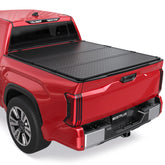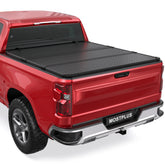What is a catalytic converter?
The catalytic converter converts harmful pollutants from your vehicle's engine into environmentally friendly emissions. Since the invention of catalytic converters, ozone-depleting vehicle emissions have been dramatically reduced. Read on to learn more about catalytic converters.
What is a catalytic converter?
The catalytic converter is a component of the exhaust system that converts harmful emissions from the engine into harmless compounds. Exhaust gases pass through the catalytic converter before being released into the atmosphere. Without a catalytic converter, 3 harmful elements would be released into the air through the muffler and could harm the environment and your health.
Where is the catalytic converter located in the car?
The automotive catalytic converter is generally installed in the first bulge of the exhaust manifold on the chassis of the car, a device similar to a long kettle. The catalytic converter is installed just behind the exhaust manifold, and the engine exhaust gases pass through the catalytic converter after leaving the cylinder.

Substances removed by the converter
The function of the catalytic converter is to neutralize toxic elements under pressure and at high temperatures so that they do not escape into the environment. During engine operation, the following pollutants are emitted:
- Hydrocarbons that are not burned in the engine release carcinogenic molecules.
- Carbon monoxide is a harmful gas produced during the combustion process.
- Nitrogen oxides are produced by the heat of the engine, which melts nitrogen and oxygen in the air. These substances are an unavoidable byproduct of internal combustion engines and cars that run on gasoline or diesel.
Carbon monoxide is extremely toxic to all mammals and can cause a variety of respiratory problems when inhaled. Nitrogen oxides enter and contaminate the natural water cycle, causing acid rain. Hydrocarbons are the main cause of haze.
However, it is possible to prevent these chemicals from being released into the atmosphere in their harmful form. A catalyst converts these substances into other, less harmful compounds. The process of forced oxidation and after burning converts them to carbon dioxide, water vapor, and nitrogen.

How does a catalytic converter work?
The heart of a catalytic converter is a ceramic monolith. It is a honeycomb structure with numerous small channels through which the exhaust gases flow. This design was invented to increase the area of contact between the exhaust gases and the catalytic elements.
The entire honeycomb is coated with a thin layer of alumina (wash coat). The increased contact surface is then coated with precious metals: platinum and rhodium or palladium and rhodium in a 5:1 ratio. These metals allow the oxidation, or reduction, of exhaust pollutants.
The catalyst converts carbon monoxide into much less toxic carbon dioxide, hydrocarbons into carbon dioxide and water, and nitrogen oxides into their original components: nitrogen and oxygen.
Do cars have more than one catalytic converter?
Keep in mind that a catalytic converter works in conjunction with an exhaust system. Cars with dual exhaust systems often have a pair of catalytic converters.
A vehicle may have more or fewer catalytic converters than exhaust pipes. Also, not all exhaust systems serve a practical purpose.
To meet emission standards, some cars use two or more catalytic converters. In this case, the engine gases are converted twice, resulting in exceptionally clean exhaust.
How much does it cost to replace a catalytic converter?
A faulty catalytic converter can cause many major engine components to fail. That is why you need to act quickly when your catalytic converter fails. Depending on the model and age of your car, replacing a catalytic converter can cost between $300 and $1,000.
Featured Products
- $479.99
$499.99- $479.99
- Unit price
- / per
- $549.99
$549.99- $549.99
- Unit price
- / per
- $489.99
- $489.99
- Unit price
- / per
- $469.99
$489.67- $469.99
- Unit price
- / per














